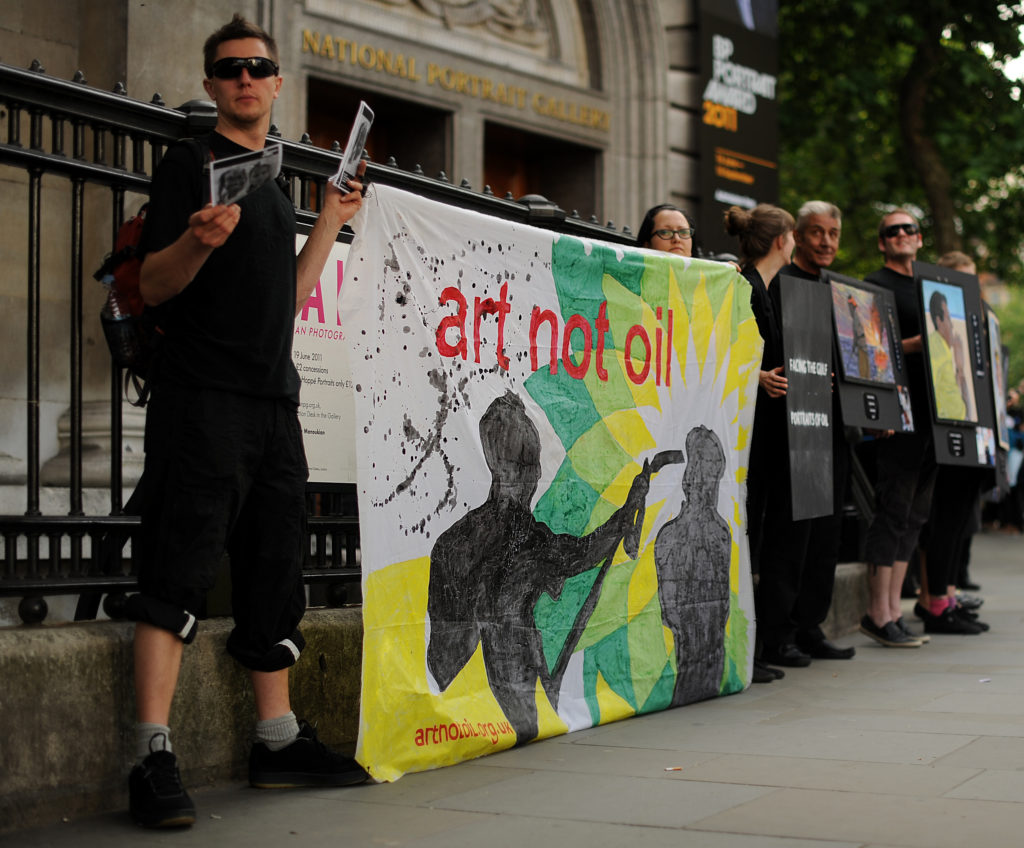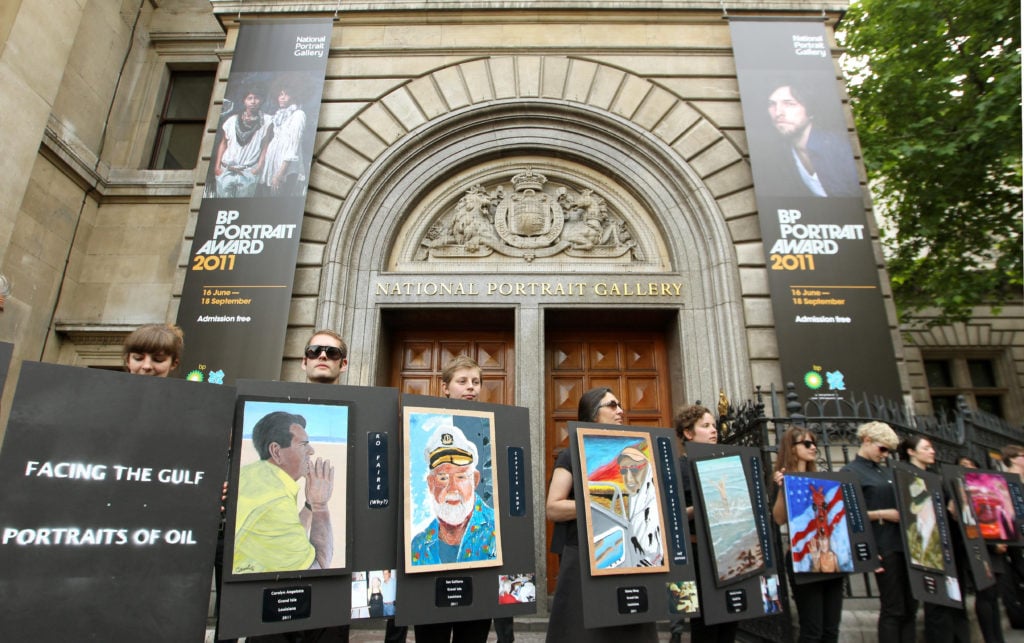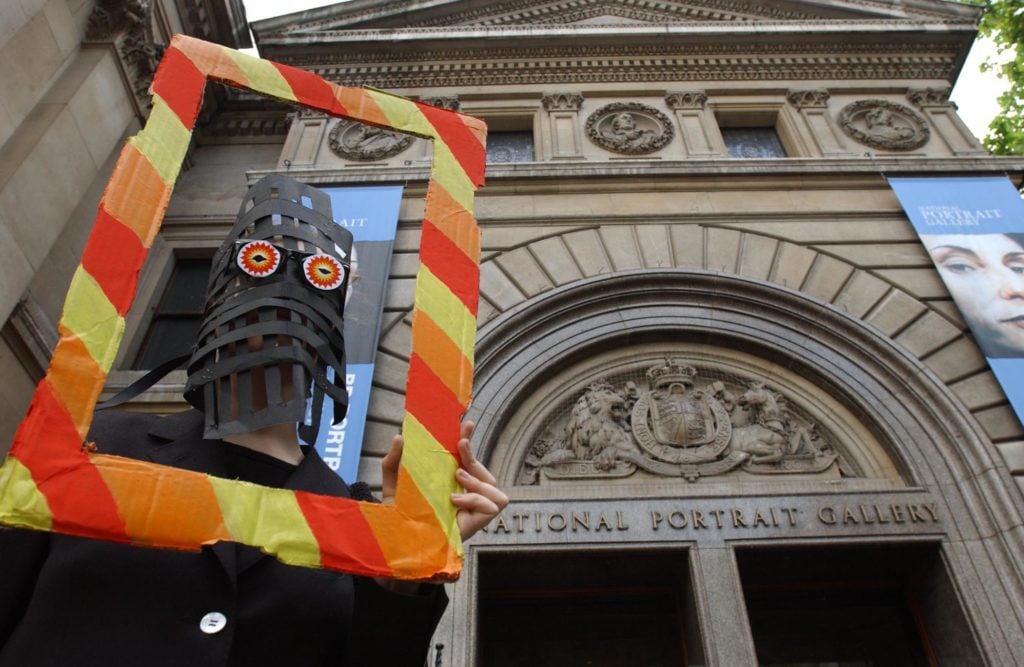Art World
The BP Portrait Award’s Own Juror, Artist Gary Hume, Is Now Calling on the National Portrait Gallery to Dump the Oil Giant
The artist has written an open letter to the museum's director, Nicholas Cullinan, demanding that ties be severed.

The artist has written an open letter to the museum's director, Nicholas Cullinan, demanding that ties be severed.

Sarah Cascone

This evening, the National Portrait Gallery in London announces the winner of its annual BP Portrait Award. But the celebratory occasion has been overshadowed by an open letter from one of the award’s judges, artist Gary Hume, calling on museum director Nicholas Cullinan to end the oil giant’s longstanding sponsorship of the prize.
“Either we distance ourselves from one of the world’s biggest fossil fuel producers and embrace the challenge of decarbonizing, or we continue to give legitimacy to BP and its business activities that are seriously exacerbating the problem,” Hume wrote in a statement released by Culture Unstained, a nonprofit founded in 2016 with the goal of pressuring cultural organizations to stop taking money from fuel companies.
“Continuing to promote BP as the climate crisis intensifies will do unacceptable damage to the NPG’s reputation, relationships, and public trust. I urge you to commit now to finding an alternative,” he added.
As a first step, Hume suggested removing Des Violaris, BP’s director of UK arts and culture, from the award’s judging panel.

Climate activists protest outside the official opening of the 2011 BP Portrait Award exhibition at the National Portrait Gallery. Photo: Dominic Lipinski/PA Images/Getty Images.
A second open letter, also released by Culture Unstained, was written by former BP Portrait Award winners and exhibitors.
“With arts funding in decline, growing numbers of artists have little choice over which opportunities to accept or reject, and as the leading competition in its field, the gallery’s annual award provides an unparalleled platform,” the artists, including former winners Wim Heldens (2011) and Craig Wylie (2008), wrote. “That we must be prepared to associate our work with BP, providing a veneer of respectability to one of the world’s worst polluters and drivers of environmental destruction simply to participate, is deeply unfair.”
Representatives for BP did not respond to artnet News’s request for comment, but told the Guardian that “we support the Paris agreement and are taking action to advance the world’s transition to a low-carbon future,” adding that “we are committed to being part of the solution to the climate challenge facing all of us.”
In a statement to artnet News, the National Portrait gallery said that it “respects other people’s rights to express their views and we are grateful to all the artists and judges who have contributed to our annual Portrait Award, which represents the very best of contemporary portrait painting by artists from all over the world. [BP’s] support directly encourages the work of talented artists and helps gain wider recognition for them and enables free admission for the public, over 275,000 visitors in London last year.”

A protester from London Rising Tide protesting against BP’s environmental record demonstrates outside the National Portrait Gallery ahead of the BP 2003 National Portrait Award 2003. Photo by Andy Butterton, courtesy of PA Images/PA/Getty Images.
The museum also defended Violaris’s position on the judging panel, noting that “the gallery invites external voices to be part of the selection process to encourage fresh thinking and different views, including a representative from the sponsor.” Two members of the award’s six-person jury change each year.
British cultural institutions are increasingly under fire for their ties to BP. After a spate of high-profile protests, London’s Tate museum ended its 26-year sponsorship agreement with the oil giant in 2017. Similar protests have been staged this year at the British Museum, led by the group BP or Not To BP?. (BP’s contract with the British Museum runs through 2022.) The National Portrait Gallery has faced criticism for its ties to BP before, including a 2014 protest from a 200-person artist-led coalition.
BP’s partnership with the National Portrait Gallery has been in place for 30 years, and the BP Portrait Award comes with a £35,000 ($44,000) first place prize. This year’s short-listed artists are Emma Hopkins, Massimiliano Pironti, Carl-Martin Sandvold, Ania Hobson, and Charlie Schaffer.
Although it is currently standing by BP, the National Portrait Gallery rejected a £1 million ($1.3 million) donation in March from a branch of the Sackler family that made their fortune selling the controversial painkiller OxyContin. Nan Goldin, the artist-turned-opioid activist leading a campaign against cultural institutions that accept the family’s money, had threatened to not cooperate with a planned retrospective of her work at the museum.
“BP Portrait Award” is on view at the National Portrait Gallery, London, UK, June 13–October 20, 2019.